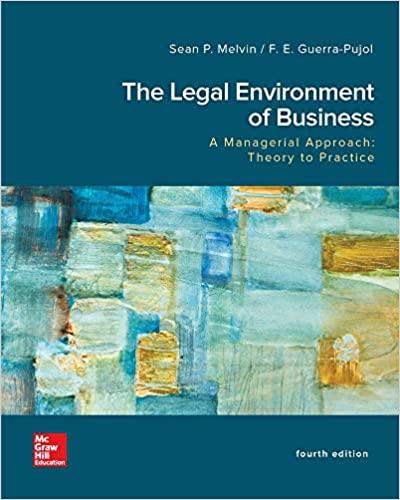Question
Play devil's advocate by providing logical arguments that oppose to the below post Hello professor and class. I hope everyone is off to a good
Playdevil's advocate by providing logical arguments that oppose to the below post
Hello professor and class. I hope everyone is off to a good start to your week and I'm eager to dive into the information this week as well as deconstructing the article. It will be my first time to "formally" deconstruct and article, so I am looking forward to learning how to do that as well as dissect the information itself. I will begin by giving a summary of the Acts themselves and then give my perspective on them. I focused primarily on the sub section 1503, Authorizations for preventing, detecting, analyzing, and mitigating cybersecurity threats as it seemed the most pertinent to cybersecurity. The entire Act is relevant, but this section deals more with the meat of what I'm interested in.
The document under 6 U.S. Code 1503 outlines authorizations for preventing, detecting, analyzing, and mitigating cybersecurity threats, providing guidelines for private entities to monitor, operate defensive measures, and share cyber threat indicators or defensive measures. It allows private entities to monitor their information systems and those of non-Federal and Federal entities with proper authorization. Private entities are also permitted to operate defensive measures to protect their rights or property and those of other entities, with written consent. It facilitates the sharing and receiving cyber threat indicators or defensive measures among non-Federal entities and the Federal Government for cybersecurity purposes, subject to certain restrictions. The document emphasizes the importance of protecting shared information, removing personal data before sharing cyber threat indicators, and ensuring compliance with applicable laws and restrictions. It grants an antitrust exemption for private entities exchanging cyber threat indicators or defensive measures for cybersecurity purposes. However, it clarifies that sharing such information does not confer a right or benefit to similar information for the receiving entity or any other entity .
The 18 U.S. Code 1030 outlines provisions related to fraud and related activities concerning computers, encompassing a range of offenses and penalties associated with unauthorized access, exceeding authorized access, and fraudulent activities involving computers. It delineates various scenarios where individuals knowingly access computers without authorization or exceed authorized access to obtain sensitive information, commit fraud, cause damage, or engage in extortion. Offenses under this section include unauthorized communication or transmission of protected information, intentional access to financial records or government data, and trafficking in passwords or similar information for unauthorized access. Penalties range from fines to imprisonment depending on the severity of the offense and whether it's a first-time or repeated offense. The Secret Service and FBI are designated authorities for investigating these offenses, with provisions for civil actions by victims for damages incurred. Additionally, the section includes provisions for forfeiting property used in committing offenses and reporting requirements for the Attorney General and Secretary of the Treasury. Overall, the section aims to address various forms of computer-related fraud and misconduct, ensuring legal consequences and remedies for victims of such activities.
I reviewed U.S. Code 1503 and found an interesting antitrust exemption for private entities. While this can potentially facilitate collaboration with outside agencies and government entities, it also raises concerns about data privacy and security. The exemption could potentially allow for the leak of sensitive information to data brokers or for personal data to be used to further capitalize these entities. Although the code does outline the importance of safeguarding information, it could still be used as a loophole.
Another cyber and information security concern is unauthorized access to systems or networks. This is where the Computer Fraud and Abuse Act comes into play. It highlights the need for zero-trust security measures, where access to systems and data is heavily restricted and monitored. The Zero Trust framework is based on a segmented network that prevents unauthorized access and mitigates the effects of a breach or security incident. Central to this framework is using privileges and permission-based roles, essential to maintaining a secure network. In today's digital age, adopting the Zero Trust framework is the next logical step in ensuring the utmost security of sensitive information.
Step by Step Solution
There are 3 Steps involved in it
Step: 1

Get Instant Access to Expert-Tailored Solutions
See step-by-step solutions with expert insights and AI powered tools for academic success
Step: 2

Step: 3

Ace Your Homework with AI
Get the answers you need in no time with our AI-driven, step-by-step assistance
Get Started


